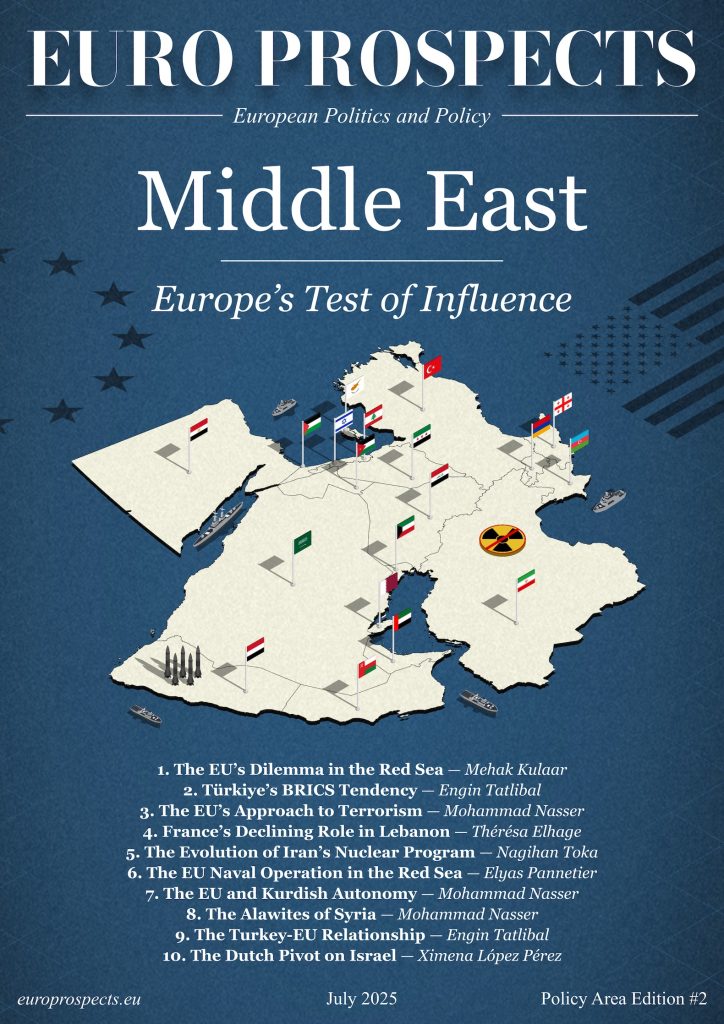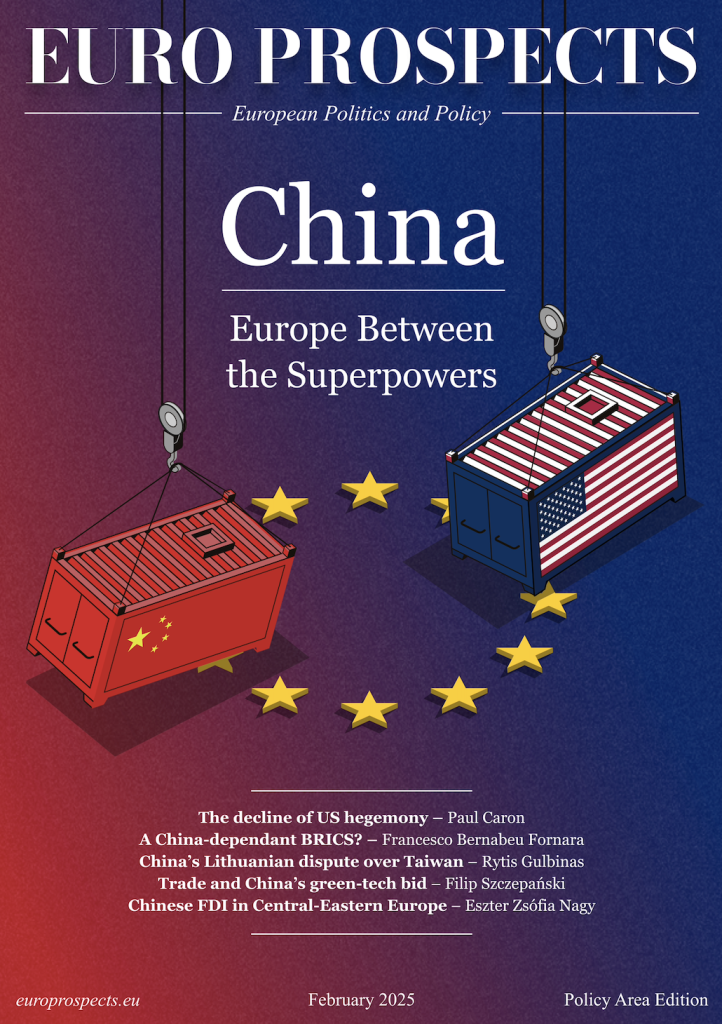
10 min read — Environment | EU | Global Europe | Geopolitics
What’s at Stake for the Planet as Europe Cuts Its Climate Aid?

By Zainab Farooqui — Climate Correspondent
Edited/Reviewed by: Simona Kohútová
July 16, 2025 | 17:15
2025 has seen a rather turbulent start, particularly when one looks at the geopolitical, societal, and technological threats occurring before our very eyes. What is looming behind these crises is a covert hazard: the climate crisis. According to Carbon Brief, the first three months of 2025 were the second warmest in the historical records of five research groups that track surface temperatures. Coupled with the warming is the increasing frequency of natural hazards, such as droughts, floods, earthquakes, and more – some of which have been witnessed globally. However, these climate-induced hazards have disproportionately affected the Global South. In the season of monsoon alone, countries in Asia, such as Pakistan and Bangladesh, and Africa, Algeria, Nigeria, the Democratic Republic of Congo, and Somalia, have experienced flash floods, which further exacerbate their existing vulnerabilities.
To make matters worse, there seems to be a strange indifference around the state of the crisis. Despite the intensifying need for mitigation and adaptation efforts, many European countries have begun scaling back their commitments to climate aid. In February, the UK announced cuts in aid from 0.5 per cent to 0.3 per cent in 2027 of Gross National Income (GNI), whilst Belgium’s Foreign Minister Maxime Prévot stated that funding for development cooperation will fall by a quarter in the next legislature, followed by France’s plan to slash 40 per cent development aid as part of its €32 billion budget cuts in April.
Such vast aid cuts point directly to a nexus the world is witnessing in Europe: the intersection of the change of governance and the onset of conflict. In the past two years, Europe has seen a rise in far-right political actors. Several EU member states, such as Finland, Italy, the Netherlands, and Slovakia, have far-right parties within government, while other countries have rising far-right parties, such as France’s National Rally (RN) and Germany’s Alternative für Deutschland (AfD). While there are always various social, economic, and political factors behind the change of a political sphere, one cannot simply deny the influence of the multiple permacrises that plagued the continent since the start of the decade, including the Covid-19 pandemic, Brexit, and Russia’s invasion of Ukraine.
The latter, in particular, provided a rather fertile ground for far-right populist narratives. In countries such as the Czech Republic, far-right parties such as Tomio Okamura’s Svoboda a přímá demokracie (SPD) exploited the cost-of-living crisis triggered by the war to stir nationalist and anti-EU sentiment. According to Vlastimil Havlík and Alena Kluknavská, war-related communication by SPD set the tone for the party’s stance, which was “relativising Russia’s responsibility by attributing part of the blame to Ukraine and framing the war as a logical reaction to security threats to Russia posed by Ukraine and the West.”
It is the rise of these governments that causes a shift in government away from cosmopolitanism, multiculturalism, and environmentalism. Climate change, particularly, causes strong scepticism and opposition from far-right actors, often viewed as a ‘liberal’ agenda. This ideology, coupled with Russia’s invasion of Ukraine, ultimately resulting in a deeper nationalist desire for the governments to strengthen their defence in order to avoid spillover from the attacks and to cut budget spending on a ‘liberal’ agenda.
This change affects the world in two specific ways. I’d like to call them ‘handing over the crown’ and ‘ripping off the band-aid.’ To clarify the first one, as said by Gareth Redmond-King, the Head of International at the Energy and Climate Intelligence Unit, a step taken back by European nations would provide space for other global powers to fill the void. An example of this is China’s Belt and Road Initiative, an infrastructure development project launched in 2013. Such a void causes a major shift in global dynamics, as foreign aid has long been a representative of soft power in developing nations to influence geopolitics. Taking the same case of China’s Belt and Road Initiative, it has been critiqued for leading developing nations to ‘debt-trap diplomacy,’ which, according to Michal Himmer and Zdeněk Rod, means that “China intentionally excessively lends money to low-income indebted states that cannot later repay Chinese debt.” Such inability can also lead to loss of national assets, such as in Sri Lanka’s Hambantota Port case, where repayment issues resulted in a lease of the port to China.
Moving onto the second part, as the Internal Development Minister of the UK, Anneliese Dodds, stated, such circumstances will “likely lead to a UK [aid] pull out from numerous African, Caribbean, and Western Balkan nations.” Between 2010 and 2023, the UK distributed £6.64 billion to the continent to support climate action, ranging from projects such as installing solar panels in Nigerian schools to climate-smart agriculture in Sudan. However, with the impending cuts in funding, it could deprive countries of developing cohesive and effective climate mitigation and adaptation plans, which are necessary for a region that has countries that are amongst the top countries most vulnerable to climate change along with other humanitarian and social crises.
Moreover, the Official Development Assistance (ODA) is expected to fall from 9 per cent to 17 per cent due to cuts by large donors, such as Germany, France, and the UK. The ODA has long funded clean and affordable energy transitions in the region. Moreover, various aid projects that focused on ‘soft adaptation,’ such as water and sanitation, social protection, and disaster preparedness, helped in addressing climate-induced challenges for the region. With the cuts, the region will face economic, geopolitical, and industrial vulnerabilities, which may push climate mitigation and adaptation further down the roster.
In the case of Asia, countries such as Nepal and Myanmar faced cuts in the training of healthcare workers, similar to Africa, while projects for clean water and sanitation lost 80 per cent of their funding, according to Action for Global Health. With the region facing similar vulnerabilities of conflict and humanitarian crisis, the cuts will lead to a reduction in proper disaster response, green transition initiatives, and lack of adaptation efforts. While Southeast Asia was less dependent on foreign aid, funding cuts will continue to affect health, socioeconomic, and humanitarian projects within the countries.
With the possible effects laid out, it leads one to question: what can be done? There are two specific things that can be done: the creation of self-sustained economies and the development of reformed climate finance mechanisms.
In terms of self-sustained economies, one country that stands out is Bangladesh. Having recently launched the Mujib Climate Prosperity Plan (MCPP), the country has taken significant steps for climate resilience that act as a multi-pronged approach to mitigating and adapting whilst creating economic opportunities, such as the Nationally Determined Contribution (NDC), the Bangladesh Climate Change Strategy and Action Plan (BCCSAP), and the Delta Plan 2100. The MCPP, in particular, aids in both economic and environmental challenges the country faces. The MCPP aims to maximise economic development while working towards achieving climate goals, such as creating 30 per cent of energy from renewables by 2030, constructing ‘Mujib Energy Hubs’ to ensure the reconversion of non-renewable sources, developing public-private financial sector collaboration for investments, and creating 4.1 million new climate-resilient jobs. Nevertheless, one cannot attribute the interconnected climate risk to one initiative. The holistic and collaborative approach of various plans has borne fruit for the nation, with the Khurushkul Ashrayan Project, a housing and climate adaptation initiative for refugees in Cox’s Bazar that provided homes to over 400,000 families, planted 1.5 million trees, and solar-powered home systems.
On the other hand, in terms of reformed climate finance systems, one of the most effective examples on the table is the Bridgetown Initiative. Proposed by the Barbados Prime Minister, Mia Mottley, the initiative aims to reform the global financial system to make climate finance more accessible and affordable to developing countries by suspending high-interest surcharges on loans, providing $100 billion a year to help drive private sector investment in projects for green energy transitions, and making public and private creditors include disaster clauses in lending deals. As Gareth says, “Within climate finance, at whatever level, there is a very clear demand from countries in the Global South for more of it to be directed towards adaptation, for more of it to be in the form of grants than loans, and for the wealthy, developed nations not to forget the growing need for finance to assist with ever more costly loss and damage driven by ever more dangerous climate change impacts, as the world heats.”
Disclaimer: While Euro Prospects encourages open and free discourse, the opinions expressed in this article are those of the author(s) and do not necessarily reflect the official policy or views of Euro Prospects or its editorial board.
Write and publish your own article on Euro Prospects
Subscribe to our newsletter – stay informed when we publish articles on pressing European affairs.

